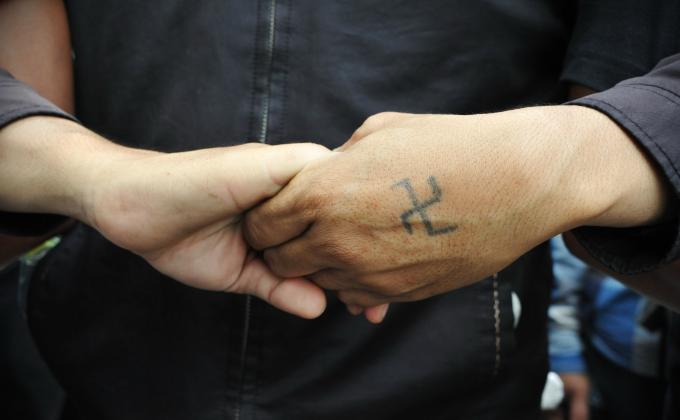A seminar on ‘Negotiating with Terrorist Organisations’, hosted by ICCT, led to a lively debate among the speakers and over fifty international participants attending the meeting.
Keynote Lectures

Isabelle Duyvesteyn (Associate Professor at Utrecht University) presented the conclusions of a report on negotations between states and armed groups that she and her co-author Bart Schuurman had conducted for the Dutch National Coordinator for Counterterrorism (NCTV). She identified three paradoxical aspects of negotiations:
Firstly, negotiations are not necessarily initiated by all those involved to end an armed conflict but may be used by the warring parties to gain time to recuperate or to prepare for a next offensive. Secondly, once negotiations have initiated, splits may occur in the parties involved, promoting more and severe violence by hardliners who oppose any kind of compromise. Finally, history shows that even successfully negotiated settlements are often brittle and frequently lead to a resumption of violence. According to statistics on the 1990-1999 period, over 40 per cent of conflicts that were ended through negotiated settlements re-ignite within 5 years. Duyvesteyn therefore questioned the currently popular tendency to see negotiations as ‘the’ preferred form of conflict resolution.

During the second keynote address, Olivier Bangerter (ICRC’s advisor for dialogue with armed groups) argued that negotiations with armed groups for humanitarian reasons take place constantly, are conducted for a variety of reasons and frequently produce improvements to human security, albeit on a local level. He identified various sorts of groups, stating that the ICRC talks to most groups if it helps enhance the organisation's security and access to people in need, as well as brings prospects for a better protection of lives and dignity of people affected by armed violence . Bangerter argued that if governments decide to disregard armed non-state actors, states may well only further radicalise such groups by closing off the path towards the non-violent resolution of conflict and armed fighters’ reintegration in society.
Moreover, by studying the statistics, it becomes clear that in conflicts between states and non-state actors, there are vast differences in levels of violence used by the different parties. In some cases, the state is actually more violent than the armed group; thus by dismissing these groups, the potential role that can be played by certain actors in some occasions is ignored - leaving the group cornered into violent activism. Bangerter concluded by quoting a member of an armed group: ‘they called us terrorists, we showed them that we can become that too’.
Panel Discussion

In the panel discussion that followed, René Grotenhuis (director Cordaid Netherlands) reflected on the presentations from the perspective of his institution. He argued that civil society is instrumental in building bridges at the local level, and as such laying the foundation for high-level negotiations between states and the armed groups’ leaders.
The energetic debate that followed centred amongst other issues on what to do when legal measures focussing on justice actually (unwittingly) hinder peace. Grotenhuis argued that this dilemma could be sidestepped by working on peace first and justice will often follow in the long term - such as was the case with former Yugoslavia. The panelists agreed that peace comes first and justice will follow.
Others questioned what the long term effects were of conflicts that were ended by military victory. Is it morally acceptable to let conflicts run their course and therefore accept more casualties? Duvesteyn responded by arguing that although a conflict ended by military victory seems to be less prone to erupt, it does not mean that this is therefore more desirable. In the latter case, opponents are simply unable to take up the arms again.
The seminar concluded with a debate on the nature of terrorist organisations and stressed the need for more research on the long-term effect of negotiations with armed groups and terrorist organisations.
Recommendations
- From the discussion it became clear that negotiation is not necessarily “two parties sitting at a table surrounded by cameras, journalists and official statements” but that it occurs all the time at different levels. Some of the grassroots negotiations prepare the ground for formal negotiations later.
- Both the panel and the participants agreed that the topic of negotiations deserves more study and attention and that there is a distinct need for additional research on the issue. It would be specifically interesting to look into the factors that influence the failure or the success of negotiated peace agreements.



